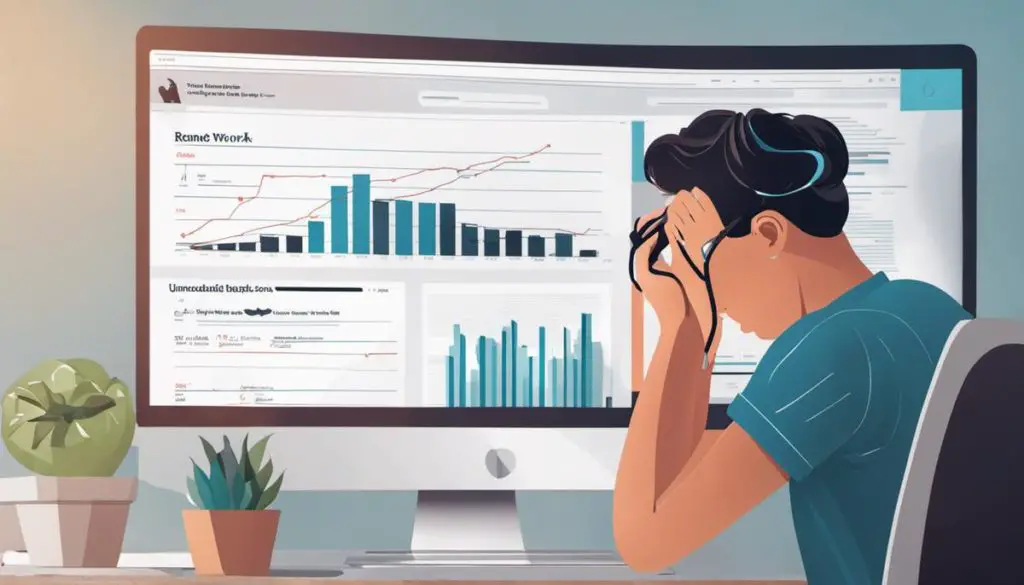Are you nearing or are already at a point where you cannot work as efficiently as before where remote work is the mode you are in? These strategies on how to prevent burnout in the workplace is all you need. Read on to find out.
In the current landscape where remote work has become a new norm, the understanding of challenges such as work burnout is paramount. The concept of remote work burnout, its triggers and impact, is becoming increasingly relevant.
Burnout, when left unchecked, not only undermines work performance but also personal well-being. Recognizing signs and symptoms early on could serve as a game-changer.
Furthermore, understanding its root causes, such as work-life imbalance and lack of variation in work routine, is pivotal. The key to avoiding burnout lies in developing effective strategies including balanced work-life, workload management, and maintaining mental and physical health.
In addition, the experiences of successful remote workers, who skillfully avoid burnout, can offer intriguing insights and practical ways to stay motivated and productive in this new framework of work.
Table of Contents
Background on Remote Work Burnout
Characteristics of Remote Work Burnout
Burnout is a state of emotional, physical, and mental exhaustion caused by excessive and prolonged stress. Remote work burnout, specifically, is this state brought on by the conditions and demands of remote work. It’s a significant issue that has come to the forefront with the global shift toward remote or home-based jobs, triggered primarily by the pandemic.
Remote work burnout has a multitude of triggers. Juggling work and personal life simultaneously in a home environment without clear boundaries contribute to this.
Moreover, the lack of in-person social interactions, hour-over-hour virtual meetings, and the pressure to stay connected round the clock amplify the stress levels. Additionally, concerns about job security or job overload could heighten the sense of burnout.
The impact of remote work burnout is far-reaching. Not only does it affect work performance – causing a decline in productivity, creativity, and overall job satisfaction – but also has severe implications for personal well-being. It’s often accompanied by disrupted sleep, erratic eating habits, increased irritability, feelings of disconnect, and noticeable lack of energy.
Dealing with Remote Work Burnout: Insights from Remote Workers
First-hand accounts from workers who’ve experienced burnout can shed further light on this issue.
For instance, Jane, a remote customer service representative, talked about her initial struggle with burnout. For her, the major trigger was the blurred lines between work and personal life. She found herself checking work emails and attending to work issues even after clocking out for the day, which led to a constant state of stress and eventually burnout.
Since then, Jane has implemented clear boundaries between her work and personal life. She reserves specific hours for work, during which she’s fully present and committed, and then disconnects afterwards. This deliberate step has helped her manage stress levels and avoid burnout.
Remote Work Burnout: A Rising Concern
As the world continues to adapt to the realities of the COVID-19 pandemic, remote work has become a significant aspect of our lives. However, with this adjustment comes the potential risk of remote work burnout, a pressing issue that demands understanding of its triggers and impact to develop preventative measures more effectively.
Signs and Symptoms of Remote Work Burnout
Exploring the Phenomenon of Remote Work Burnout
Remote work, albeit flexible, is not without its challenges.
A study conducted by the National Institute of Health closely associates remote work with elevated stress levels, often spiraling into burnout. This state, characterized by emotional, mental, and physical exhaustion due to relentless and persistent stress, often leaves employees feeling overwhelmed, emotionally drained, and incapable of meeting continuous demands.
Recognizing the Physical Signs of Burnout
Physically, one might experience symptoms like headaches or migraines, feeling tired even after resting, getting sick more often due to lowered immune response, and changes in appetite or sleep habits. A study in the Journal of Occupational Health found a significant association between burnout and physical symptoms such as those mentioned.
Identifying Emotional and Psychological Signs
Emotionally, burnout can result in feeling drained, unable to cope, and a lack of energy or enthusiasm for the job. There might also be feelings of disillusionment about one’s job and feelings of negativity or cynicism related to work. Anxiety, depression, and a sense of failure or self-doubt are common as well, as per research in the American Journal of Family Therapy.
Behavioral Signs of Remote Work Burnout
Behaviorally, signs might include withdrawing from responsibilities, isolating from friends and family, taking longer to get tasks done, or procrastination in starting assignments. There could also be changes in alcohol or substance use/abuse, changes in routine like sleeping and eating habits, and failure to perform routine house chores or maintenance.
Role of Work-Life Balance in Avoiding Burnout
To avoid burnout, it’s important to establish a clear work-life balance when working from home. Setting boundaries is extremely crucial according to experts from the Mayo Clinic. This could be done by maintaining regular work hours, creating a dedicated workspace, and taking regular breaks. It’s also important to separate personal life from work, by avoiding work-related activities during personal time, and vice versa.
Importance of Self-Care and Time Off
The importance of self-care cannot be overemphasized, and employees need to ensure adequate sleep, regular physical activity, and a nutritious diet. In the same vein, taking time off from work regularly is crucial in preventing burnout. Whether this is a weekend off from work, availing vacation days, or simply taking a day off for relaxation, time away from work allows for vital recuperation according to a study in the Annual Review of Psychology.
Communication and Support Groups
Regular and open communication with supervisors and coworkers can also help manage work-related stress from remote work. Having a support group, such as friends, family, or mental health professionals can also provide a satisfactory outlet for discussing work-related pressures. The American Psychological Association suggests that having a strong social network helps employees to manage stress and avoids burnout.
General Prevention Strategies to Avoid Remote Work Burnout
The above account and numerous others alike emphasize the importance of setting boundaries and maintaining work-life balance to avoid remote work burnout. Here are some strategies:
- Work-Life Compartmentalization – Separating work life from personal life can help reduce stress and prevent burnout. In practical terms, this could mean designating a specific area for work and refraining from work-related activities outside of set hours.
- Regular Breaks – Taking short breaks throughout the workday can effectively manage stress levels. These could include quick physical activities, meditations, or simply stepping away from the workspace.
- Maintaining Social Interactions – Because isolation can enhance feelings of burnout, maintaining social interactions— albeit virtually— is crucial. Regular check-ins with colleagues can promote a sense of connectedness.
- Self-Care Habits – Dedicating time to activities that promote physical and mental well-being— like exercising, eating healthily, ensuring sufficient sleep— can also counter burnout.
Addressing Remote Work Burnout Proactively
Instances of severe or chronic burnout call for proactive measures, particularly the intervention of professionals like psychologists, psychiatrists, or trained therapists. These experts can supply varied techniques, strategies, and therapies, from cognitive behavioral therapy (CBT) to stress management skills, tailored according to individual needs. Paying heed to professional advice can be pivotal in effectively managing burnout.

Fundamental Causes of Remote Work Burnout
Unearth the Root Causes behind Remote Work Burnout
The advent of remote work has redefined traditional workplace structures, providing flexibility and convenience to many. However, this shift has also given rise to the omnipresent problem of ‘remote work burnout.’
Key triggers of remote work burnout include a hazy divide between work and personal life. Remote work often erases stark distinctions between professional tasks and personal activities, leading to overwork, heightened stress levels, and even emotional burnout. Statistics underline this trend, with research by the National Bureau of Economic Research citing a rise of 48.5 minutes in an average workday during the pandemic.
Moreover, the lack of variety in daily routines contributes to remote work burnout. Traditional office set-ups provide opportunities for casual interactions, coffee breaks, and simply a change of scenes, presenting a much-needed breather from work monotony. In contrast, remote work can prove to be monotonous and isolating, escalating to burnout.
Inadequate and ineffective communication among remote teams is another significant factor impacting work stress levels. A Harvard Business Review study highlighted the concern of remote employees feeling ‘shunned’ and ‘left out’ due to insufficient communication. Technical issues, communication gaps, or limited information add to the stress load, further fueling burnout.
An Overview of Remote Work Burnout
The concept of burnout isn’t foreign, especially in regard to remote work. However, the abrupt and prolonged switch to telecommuting as a result of the ongoing pandemic has exacerbated this phenomenon. According to a survey by Monster.com, there has been a staggering 69% uptick in remote employee burnout since the onset of the health crisis. Besides the suddenness of the transition, lack of adequate training to meet the unique demands of remote work may very well be the underpinning factor attributing to this rise.
Reiterating the significance of work-life equilibrium, Dr. Alex Stajkovic, the associate dean for faculty affairs and research at the University of Wisconsin-Madison’s School of Business, expresses this sentiment succinctly, “When work and life become indistinguishable, that’s the breeding ground for burnout.”
Resonating with this expert view, employees often gripe about the encroachment of work into their personal space. One such employee confided, “The line separating work and home seems to have blurred. It feels more like I’m dwelling in an office rather than telecommuting.”
Combatting burnout, according to experts, hinges on the establishment of rigid boundaries to isolate professional and private life, frequent breaks, active lifestyle, and unequivocal communication strategies implemented organization-wide. Tackling these concerns requires a combined proactive approach from employers and their workforce to maintain mental health and sustain productivity levels in these uncertain times.

Effective Strategies on How to Prevent Burnout in the Workplace
Implementing Balance: Wallets against Burnout
Committing to a balance between professional and personal life is paramount in steering clear of remote work burnout. Allocate specific hours to your office tasks while reserving sufficient downtime for self-rejuvenation.
Make a conscious effort not to extend your work beyond the earmarked schedule and find time to indulge in physical fitness regimes, hobbies, and activities that pique your interest. These are important activities that will wean you away from stressful work.
Such measured separation could potentially decimate exhaustion rates and steer your productivity levels northward. You gain more control over your life.
Manage Your Workload Effectively
A leading factor in remote work burnout is excessive workload. Be sure to manage your tasks properly by setting realistic deadlines and prioritizing essential tasks. For sure, there are a lot of tasks written in your to do list.
Use project management tools to organize all your tasks and deadlines. Remember to delegate work effectively if you’re in a leadership position. Time saved for you will help you focus on more important work.
Proper Communication is Key
Clear and concise communication helps avoid misunderstandings and unnecessary stress. Regular check-ins with your team not only facilitate the flow of information but also foster interaction.
Remember, remote work can be isolating, and staying connected with your colleagues can keep you engaged. Remember to respect others’ working hours in remote work settings, avoid sending late-night emails, or expecting immediate responses.
Leverage Technology for Efficiency
Technology is a vital enabler for remote work. Use appropriate apps and software for project management, communication, and collaboration.
However, make sure you balance your screen time. Limit non-work related use of technology to prevent digital fatigue and enable disconnecting from work. This approach will also help you sleep well and get much needed rest.
Promote Your Physical Health
Physical health is equally important in avoiding remote work burnout. Regular workouts enhance your overall health and reduces the risk of burnout.
Make sure to include breaks for physical activities in your daily routine. Focus on maintaining a balanced diet to keep your body nourished and energized.
Prioritize Your Mental Health
Remote work can be challenging for mental health. Make sure to draw boundaries between your work and personal life as blurring these lines can lead to chronic stress and eventual burnout.
Consider engaging in mindfulness exercises, meditation, or other stress-relieving activities. Ensure adequate sleep as it is an essential component for mental health and well-being and productivity.
Acknowledging the Need for Professional Help
In an increasingly digital society, our mental health often gets neglected.
However, especially in remote working scenarios, the lack of work-life boundaries can lead to burnout. If feelings of overwhelming stress persist, don’t hesitate to reach out to a mental health professional.
Numerous online resources, including teletherapy, are readily available and can be utilized. Employers might also offer assistance programs to provide support. Remember, seeking help is a sign of strength and perseverance, not weakness.

Real Stories: How Successful Remote Workers Avoid Burnout
Success Story: Emily, Software Developer
Emily, a software developer at a leading tech company, shared her experience of successfully overcoming potential burnout. To combat mental exhaustion due to extended work hours, Emily schedules regular breaks during her workday. She disconnects from her workstations for short periods to stretch, meditate, engage in hobbies, or simply rest. The breather helps her maintain her energy and focus throughout the day.
Success Story: John, Freelance Graphic Designer
John, like Emily, was initially excited about the prospect of working from home during the pandemic. However, he soon found himself feeling overwhelmed with the constant pressure of being ‘always online’.
John overcame this by setting specific, non-negotiable work hours. He communicated with his clients about his work schedule and boundaries to prevent work from creeping into his personal time, and vice versa.
This practice prevented burnout and ensured his productivity.
Success Story: Maya, HR Manager
Maya, an HR manager at a multinational corporation, was responsible for managing remote employees scattered across various time zones. The nature of her work prompted her to be available round the clock, leading to work exhaustion and burnout.
Maya began to assign ‘quiet hours’ during her day, where she wouldn’t check or respond to emails. She also started delegating tasks more effectively, trusting her team members with responsibilities.
Success Story: Lance, Digital Marketer
Alongside Emily, John, and Maya, Lance, a digital marketer, shares his novel approach to tackle remote work burnout. Lance ensures that he maintains a dedicated workspace.
By having a specific area in his home for work, he keeps his work and personal life separate. Once he leaves that space, he considers himself off work. This practice helps him draw clear boundaries and avoids the feeling of burnout.
Success Story: Sarah, Virtual Assistant
Sarah, a virtual assistant, adopted a healthy lifestyle to combat work-from-home burnout. Regular bouts of exercise, good nutrition, and adequate sleep helped her maintain her energy levels. Like Emily, Sarah also started practicing mindfulness and relaxation techniques to alleviate stress.
These stories underline that avoiding remote work burnout requires creating boundaries between professional and personal life, developing a routine, effective communication, delegating tasks, and maintaining physical and mental health.
Implementing these strategies for work-life balance can significantly improve productivity and well-being in the remote working culture.

Ultimately, while remote work presents unique challenges and variations of professional stress, it also offers an opportunity to rethink our approach to work and wellness.
Navigating through the common causes of burnout, recognizing its signs and symptoms, and employing effective preventative strategies are essential. Leveraging technology correctly, fostering robust communication, and maintaining a manageable workload can significantly reduce the risk of burnout.
Moreover, drawing inspiration from the experiences of successful remote workers can greatly contribute to personal learning and resilience. It serves as a powerful reminder that burnout can be mitigated, and remote work can still be a fulfilling and productive experience if we equip ourselves with the right knowledge, skills, and mindset.



